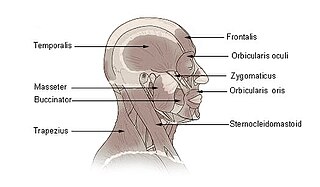Emotions are biological states associated with the nervous system brought on by neurophysiological changes variously associated with thoughts, feelings, behavioural responses, and a degree of pleasure or displeasure. There is currently no scientific consensus on a definition. Emotion is often intertwined with mood, temperament, personality, disposition, creativity and motivation.
Anger, also known as wrath or rage, is an intense emotional state involving a strong uncomfortable and hostile response to a perceived provocation, hurt or threat.

Remorse is a distressing emotion experienced by a person who regrets actions which they deem to be shameful, hurtful, or wrong. Remorse is closely allied to guilt and self-directed resentment. When a person regrets an earlier action or failure to act, it may be because of remorse or in response to various other consequences, including being punished for the act or omission. People may express remorse through apologies, trying to repair the damage they've caused, or self-imposed punishments.

Sadness is an emotional pain associated with, or characterized by, feelings of disadvantage, loss, despair, grief, helplessness, disappointment and sorrow. An individual experiencing sadness may become quiet or lethargic, and withdraw themselves from others. An example of severe sadness is depression, a mood which can be brought on by major depressive disorder or persistent depressive disorder. Crying can be an indication of sadness.

A facial expression is one or more motions or positions of the muscles beneath the skin of the face. According to one set of controversial theories, these movements convey the emotional state of an individual to observers. Facial expressions are a form of nonverbal communication. They are a primary means of conveying social information between humans, but they also occur in most other mammals and some other animal species.

Body language is a type of a nonverbal communication in which physical behaviors, as opposed to words, are used to express or convey the information. Such behavior includes facial expressions, body posture, gestures, eye movement, touch and the use of space. Body language exists in both animals and humans, but this article focuses on interpretations of human body language. It is also known as kinesics.

Paul Ekman is an American psychologist and professor emeritus at the University of California, San Francisco who is a pioneer in the study of emotions and their relation to facial expressions. He has created an "atlas of emotions" with more than ten thousand facial expressions, and has gained a reputation as the best human lie detector in the world. He was ranked 59th out of the 100 most cited psychologists of the twentieth century. Ekman conducted seminal research on the specific biological correlations of specific emotions, attempting to demonstrate the universality and discreteness of emotions in a Darwinian approach.
A microexpression is the innate result of a voluntary and an involuntary emotional response occurring simultaneously and conflicting with one another. This occurs when the amygdala responds appropriately to the stimuli that the individual experiences and the individual wishes to conceal this specific emotion. This results in the individual very briefly displaying their true emotions followed by a false emotional reaction. Human emotions are an unconscious bio-psycho-social reaction that derives from the amygdala and they typically last 0.5–4.0 seconds, although a microexpression will typically last less than 1/2 of a second. Unlike regular facial expressions it is either very difficult or virtually impossible to hide microexpression reactions. Microexpressions cannot be controlled as they happen in a fraction of a second, but it is possible to capture someone's expressions with a high speed camera and replay them at much slower speeds. Microexpressions express the seven universal emotions: disgust, anger, fear, sadness, happiness, contempt, and surprise. Nevertheless, in the 1990s, Paul Ekman expanded his list of emotions, including a range of positive and negative emotions not all of which are encoded in facial muscles. These emotions are amusement, embarrassment, anxiety, guilt, pride, relief, contentment, pleasure, and shame.

Contempt is a pattern of attitudes and behaviour, often toward an individual or group, but sometimes towards an ideology, which has the characteristics of disgust and anger.

Facial Action Coding System (FACS) is a system to taxonomize human facial movements by their appearance on the face, based on a system originally developed by a Swedish anatomist named Carl-Herman Hjortsjö. It was later adopted by Paul Ekman and Wallace V. Friesen, and published in 1978. Ekman, Friesen, and Joseph C. Hager published a significant update to FACS in 2002. Movements of individual facial muscles are encoded by FACS from slight different instant changes in facial appearance. It is a common standard to systematically categorize the physical expression of emotions, and it has proven useful to psychologists and to animators. Due to subjectivity and time consumption issues, FACS has been established as a computed automated system that detects faces in videos, extracts the geometrical features of the faces, and then produces temporal profiles of each facial movement.

Resentment is a complex, multilayered emotion that has been described as a mixture of disappointment, disgust, anger, and fear. Other psychologists consider it a mood or as a secondary emotion that can be elicited in the face of insult and/or injury.
Emotional expressions are behaviors that communicate an emotional state or attitude. They can be verbal or non-verbal, and can occur with or without self-awareness. Emotional expressions include facial movements like smiling or scowling, simple behaviors like crying, laughing, or saying "thank you," and more complex behaviors like writing a letter or giving a gift. Individuals have some conscious control of their emotional expressions; however, they need not have conscious awareness of their emotional or affective state in order to express emotion.
Researchers in psychology have proposed many different and often competing theoretical models to explain emotions and emotional expression, going as far back as Charles Darwin's discussion of emotion as an evolved capacity. Though there is no universally accepted theory of emotion, theorists in emotion agree that healthy humans experience emotions and express them in a variety of ways, such as with their voices, faces, and bodies. The cultural norms and beliefs of a society also affect and shape the emotional expressions of its members, and expressions appropriate and important in one culture may be taboo in another.
Emotional contagion is the phenomenon of having one person's emotions and related behaviors directly trigger similar emotions and behaviors in other people. Emotions can be shared across individuals in many different ways both implicitly or explicitly. For instance, conscious reasoning, analysis and imagination have all been found to contribute to the phenomenon.
Reduced affect display, sometimes referred to as emotional blunting, is a condition of reduced emotional reactivity in an individual. It manifests as a failure to express feelings either verbally or nonverbally, especially when talking about issues that would normally be expected to engage the emotions. Expressive gestures are rare and there is little animation in facial expression or vocal inflection. Reduced affect can be symptomatic of autism, schizophrenia, depression, posttraumatic stress disorder, depersonalization disorder, schizoid personality disorder or brain damage. It may also be a side effect of certain medications.
Affect, in psychology, refers to the underlying affective experience of feeling, emotion or mood.
Valence, or hedonic tone, is the affective quality referring to the intrinsic attractiveness/"good"-ness or averseness/"bad"-ness of an event, object, or situation. The term also characterizes and categorizes specific emotions. For example, emotions popularly referred to as "negative", such as anger and fear, have negative valence. Joy has positive valence. Positively valenced emotions are evoked by positively valenced events, objects, or situations. The term is also used to describe the hedonic tone of feelings, affect, certain behaviors, goal attainment or nonattainment, and conformity with or violation of norms. Ambivalence can be viewed as conflict between positive and negative valence-carriers.
Emotional self-regulation or emotion regulation is the ability to respond to the ongoing demands of experience with the range of emotions in a manner that is socially tolerable and sufficiently flexible to permit spontaneous reactions as well as the ability to delay spontaneous reactions as needed. It can also be defined as extrinsic and intrinsic processes responsible for monitoring, evaluating, and modifying emotional reactions. Emotional self-regulation belongs to the broader set of emotion-regulation processes, which includes both the regulation of one's own feelings and the regulation of other people's feelings.
David Matsumoto is an author, psychologist and judoka. His areas of expertise include culture, emotion, facial expressions, nonverbal behavior and microexpressions. Matsumoto is a professor at San Francisco State University and also the Director of Humintell - a company that provides "unique training in the fields of facial expression of emotion, nonverbal behavior, detecting deception and cultural adaptation." In addition, he is a 7th degree black belt in judo and the owner and head instructor of the East Bay Judo Institute in El Cerrito, California.
Non-verbal leakage is a form of non-verbal behavior that occurs when a person verbalizes one thing, but their body language indicates another, common forms of which include facial movements and hand-to-face gestures. The term "non-verbal leakage" got its origin in literature in 1968, leading to many subsequent studies on the topic throughout the 1970s, with related studies continuing today.
Mark G. Frank is a social psychologist, communication professor, and an internationally recognized expert on human nonverbal communication, emotion, and deception. Dr. Frank conducts research and does training on micro expressions of emotion andsz of the face. His research studies include other nonverbal indicators of deception throughout the rest of the body. He is the Director of the Communication Science Center research laboratory that is located on the North Campus of University at Buffalo, State University of New York. Under his guidance, a team of graduate researchers conduct experiments and studies for private and government entities. Frank uses his expertise in communication and psychology to assist law enforcement agencies in monitoring both verbal and nonverbal communication.







